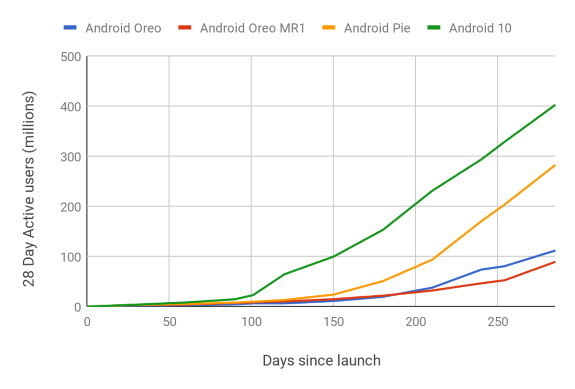
On the Android blog, Google reports adoption of Android 10 has been the fastest ever. Five months post launch, 100 million devices are now running Android 10. That's 28 percent faster than what was seen with Android Pie, Android 10's predecessor.
Below, Google explains some of the changes they've made in recent years:
Over the past few years we’ve introduced new capabilities that enable us to deliver updates more uniformly, quickly, and efficiently to Android devices. These capabilities include:Later this quarter, we can expect the arrival of Android 11. This version will have nine more OS components that are updatable via Google Play, a General Kernel Image (GKI) that work across all Android devices and that enables faster security deployments, and a new Virtual A/B seamless OS updating system that requires less storage space.Oreo’s introduction of Project Treble created a system/vendor split for a much cleaner separation of OEM and SoC dependencies from the rest of the code base. This effort sped up the adoption of Android Pie by 2.5X. Every Android device that preloads the Google Play Store has been Treble compliant since that point. In Pie, we started publishing the Generic System Images (GSI) so that developers can use them for app-compat testing on real hardware. Treble compliance means that every device is compatible with our GSIs, even if it does not ship with them. We also worked with our major partners to launch an OEM developer preview program. As a result, we saw a further 1.5X increase in the adoption of Android 10. In Android 10, we started updating components of the OS directly via Google Play system updates (Project Mainline). Mainline provides security and privacy updates for the OS in a way that’s similar to apps – through Google Play. For example, in our most recent deployment, we directly updated 285 million devices with fixes for security vulnerabilities. Google Play is also responsible for updating critical applications and services, such as authentication, push notifications, and Google Play Protect. A good example is the launch of the Exposure Notification API. Exposure Notifications are a tool to help public-health agencies in the fight against COVID-19. The API was deployed in May via Google Play to over 2 billion devices in the space of just 4 weeks.
